Brooklyn Hospital Center Plans A Modern Campus In The Heart of Downtown Brooklyn
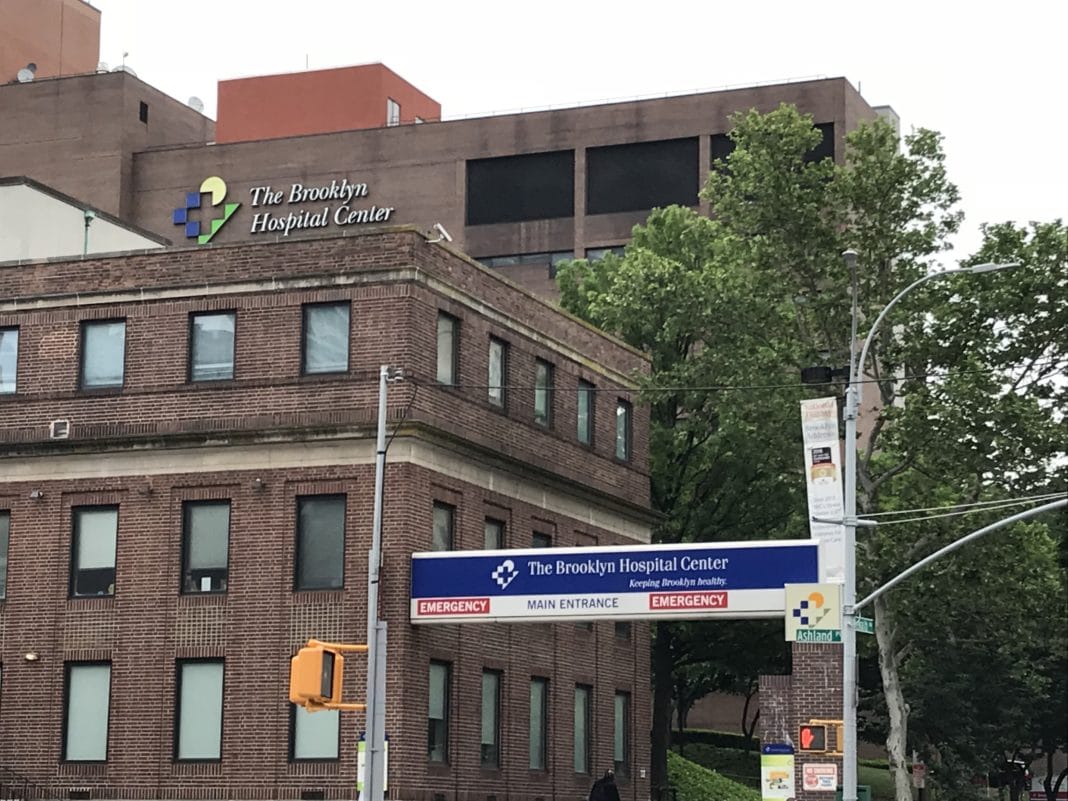
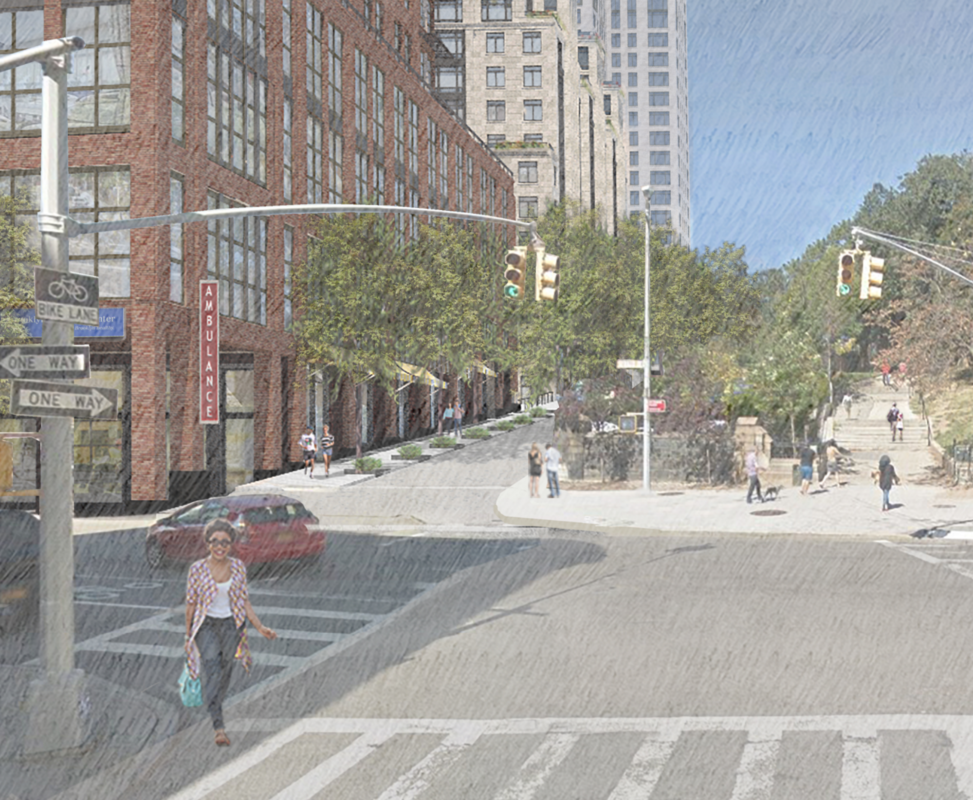
The 175-year-old Brooklyn Hospital Center (Brooklyn Hospital) filed a preliminary application on September 24 to begin public review of the plan to modernize its campus. Located between Long Island University and Fort Greene park, some of its buildings date back to the 1890s. The complex could be more efficient, maintenance and repairs are costly, and Brooklyn Hospital’s management believes it is due for some significant upgrades, all while serving the community.
We spoke to Gary Terrinoni, Brooklyn Hospital Center’s CEO, about the plans, the pandemic, and serving the community.
“The transformation of the campus would be done in a deliberate way over eight to 10 years,” Terrinoni says. “You have to be pretty delicate and organized, particularly when you’re providing services that you can’t stop providing. So all that is taken into consideration as we move forward.”
The one billion dollar plan proposes developing about 800,000 square-feet for hospital use in two new towers, including a new cancer center, ambulatory surgery center and outpatient diagnostic center, and an expanded emergency room, maternity ward, cardiac center, and breast cancer center facilities. It also calls for new space dedicated to offices for doctors and other healthcare professionals. The hospital is licensed for 464 beds, but it is currently not running at full capacity, Terrinoni says, and the plan does not ask for more.
“Historically, the old hospitals had double-bedded units or even in some cases, three or more beds per unit. Nowadays, the standard anywhere throughout the country is single bedded units, and COVID highlighted that need. You are trying to keep people isolated. You don’t want to have to commingle folks for different reasons, viruses being one of them. “
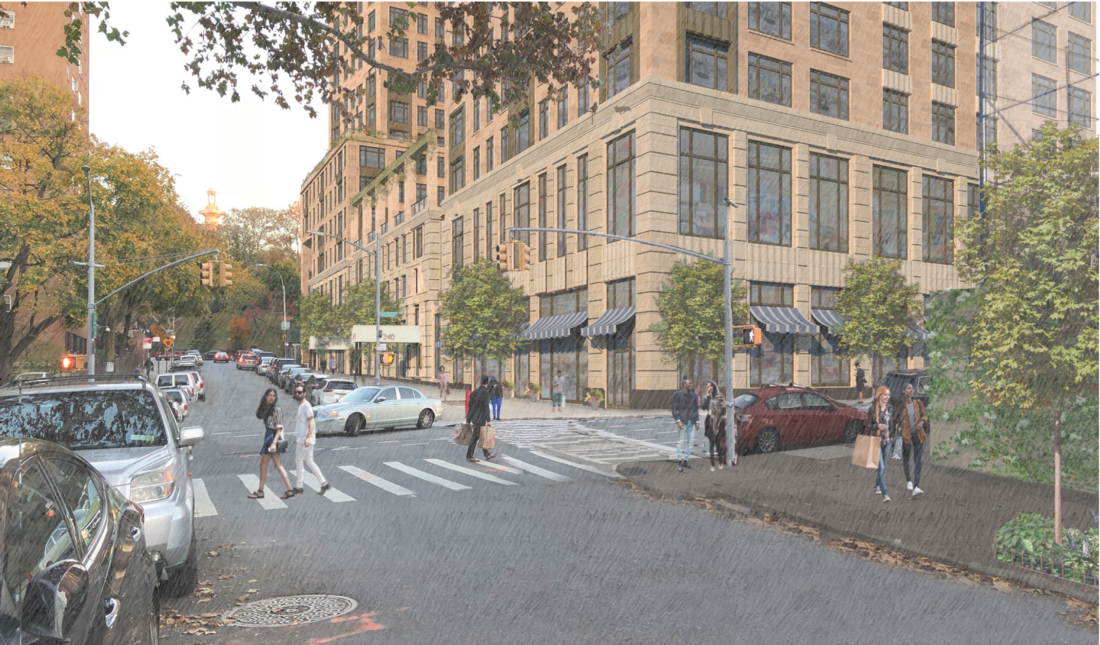
What is the project? A complete reimagination of the block. The hospital would consolidate in buildings along the corner of DeKalb Avenue and Ashland Place. The proposed development plan requires rezoning of the property by the city through the ULURP process.
“Right now, the hospital buildings we have are on the Fort Greene side, literally front the park. Ultimately that property in this plan, long term, those buildings would be torn down, of course, and the new hospital would be built,” Terranoni said.
Brooklyn Hospital sold the Maynard building at 240 Willoughby Street (by the park) to the Rabsky Group for $95 million in 2019 to be redeveloped into a residential building. The parking garage at 240 Willoughby (corner of Ashland Place) is the only other property to be sold off to fund the development.
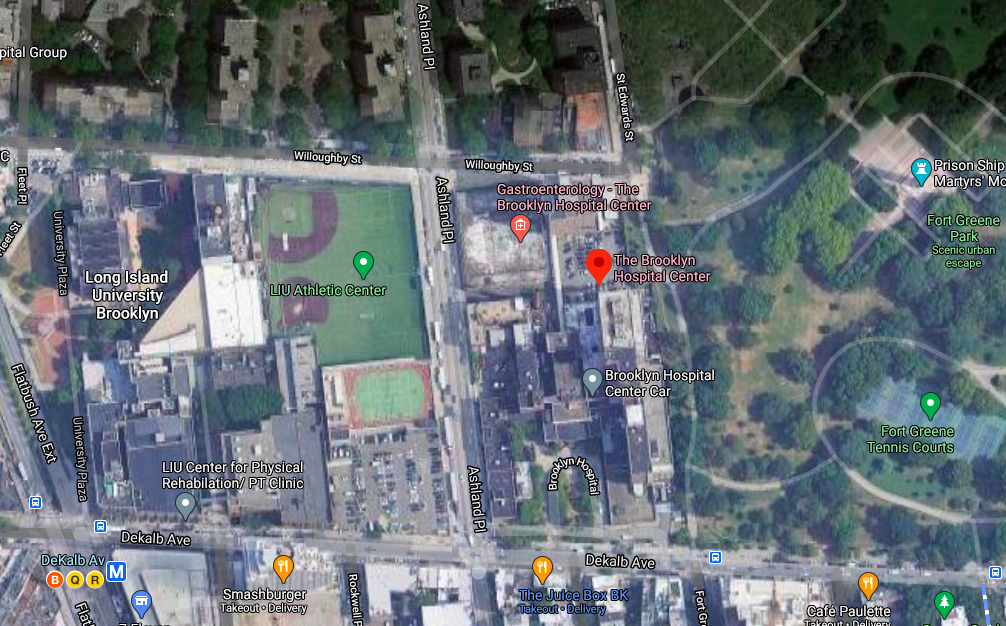
“All the other property would be a land lease,” Terranoni explained. “We plan on leasing the ground up with the idea that we could take it back in 49 years or 99 years. We do that, particularly in the health care setting, because when it comes to that time, we might have to rebuild and put up a new hospital. Our architect called it ‘the open chair concept’ – you always have to leave something available for the future. And that’s why from here on, we will not be selling any property.”
“[Of the leased developments], a big piece of it would be for the hospital too. In some cases, it could be a combined development,” Terranoni explained. “Let’s say the first thing we might build is a new ambulatory center, which would house a new Ambulatory Surgery Center, outpatient imaging, a lot of state of the art outpatient services that could go in, for example, like a tower, and that could be the basement and the first four floors. Above could be a residential tower. That might be one way to do it.” The redevelopment plan envisions approximately 1,000 permanently affordable apartments, along with mixed-income units.
Where would that be?
“That probably would be along the corridor of Ashland and DeKalb. Now, we’re not quite sure what parcel just yet. Still, typically what you do with an ambulatory center, if you look at most health systems, we want to make it very convenient, in other words, where you don’t have to go through the whole hospital to get to the ambulatory. We do have that issue right now.
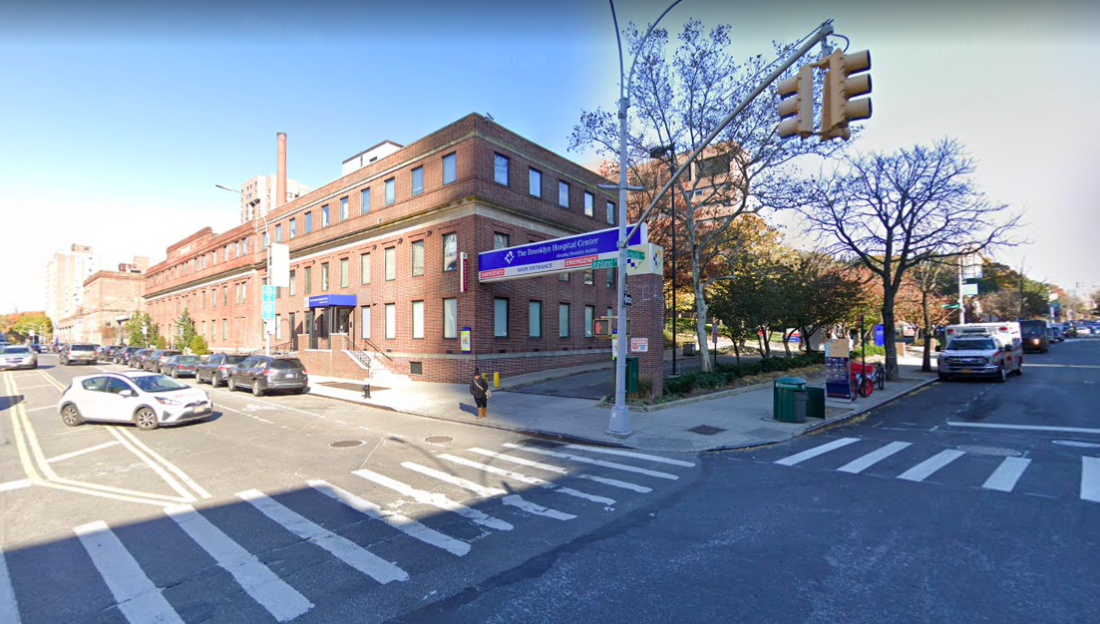
“For example, to get to radiology, you have to come through the hospital near the Emergency Department. We don’t want that to happen in the future. We’re envisioning this freestanding ambulatory center, which could have residential on top, but that would be integrated with what would be the new hospital, either through a tunnel or a bridge, or could be just connected. It gives you a lot of flexibility between ambulatory tests and things of that nature. And then our new hospital towers would be independent, but connected.”
Rezoning and redevelopment of the hospital also allow the City to create a better connection of the surrounding area to Fort Greene Park.
“The city planning has asked us to work together with them [Long Island University] as we look at environmental concerns and things of that nature,” Terranoni said. “And I believe city planning, in this case, wants to provide a throughway from their campus through our campus.” The current facilities form an impenetrable mega block, and the new plan would allow for more of a pedestrian connection from the LIU campus to the park.
Funding for the massive redevelopment will come primarily from the sale and lease of the property.
“What’s important to note, we are a safety net hospital. Safety net hospitals are funded by the government – 50% Medicaid, 25% Medicare. We’re not asking the city or state for any money. What we’re trying to do is convert what has now become a potentially valuable asset to be able to finance our future rebuilding of the campus,” Terranoni says. “We typically only have like 20 days of cash on hand. For an organization that’s a half a billion in size, that’s a very low amount.”
So the plan is, he explained, to take some of the proceeds from the sale and leases to create an endowment and use the return on that to help fund development. Monetizing air rights is another potential source of revenue, and then there is always financing.
“That could help fund the hospital because, you know, as a safety net, you’re really not in the position that you’re making any money,” Terranoni said. “When the time comes, we will be looking at all the math and all that, and we’ll hopefully be making the best decisions for the organization.”
The impact of the coronavirus on the hospital financially has been significant.
“We’re losing and have been losing a substantial amount of money. We were marginal at best before COVID. We were losing some money. The COVID just exacerbated it. I will say the government, you know, in the grant money and then in the advances, has allowed us to sustain ourselves and keep moving. You don’t have to pay those back until 2021, into 2022. In our case, for example, we received 45 million [dollars]. And as opposed to having to pay that back right away, they’re deferring that payment back. So that’ll be helpful for us from a cash flow perspective.
“But we’re really hurting as an organization, as any independent safety net [hospital] would be. And we’re going to take the necessary actions that we need to survive and work. We’re doing that.”
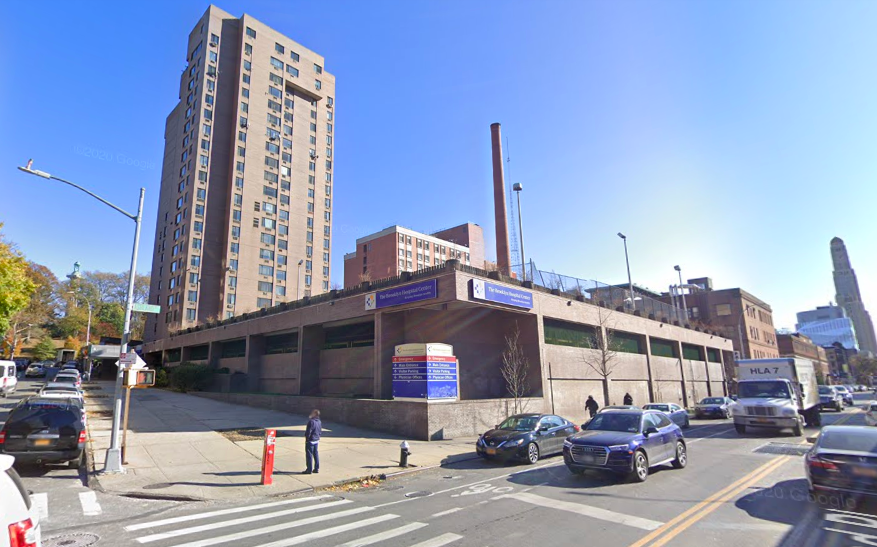
What would be some of those?
“Well, some would be reductions in force, as appropriate. For example, when we look at our ED [Emergency Department] volume, interestingly enough, it is way down post-COVID. Because I think it’s still the intimidation of people not wanting to come to the hospital. So our volumes are down, and the majority of our admissions would have come through the ED. So the fact that that’s not happening has a more severe impact on our monthly financial statements. That’s one example.
“Another example is obstetrics. We’ve lost a significant portion of our obstetric volume, and we’re trying to build that back by making the right decisions. But the point is, we have to look at the areas within the hospital where the volume hasn’t rebounded, and we have to make adjustments to staffing accordingly. If your volume goes down in the business, it’s virtually impossible to keep the same level of expenses. And in our case, being a safety net hospital, there is nothing for us to go back to or rely on – we don’t have a huge endowment.”
The hospital employs about 2,600 people.

“Our strategy with the redevelopment of the campus is to put us in a whole different category that, you know, we don’t have to continually worry about where the next dollar is coming from and to put us in a better position to deal with things like another COVID.
“We dealt with it. We were the first ones to put up the tent. The team here has done an amazing job. It was never at any point about money. We did what we had to do. And then you worry about the money later. We were just we were all praying that eventually, the government would come in, and the advances came pretty quickly. That $45 million came within the first couple of weeks. That was terrific. And then the grant money came a little bit after that. That money really did help support us through the whole COVID crisis. And now we’re just looking at a post COVID. And what we need to do to get our house in order.”
“Our feeling is – everybody needs to get the same level of care, gets the same level of newness, gets the same technology. We just opened our faculty practice up the street and on Fulton and Ashland, and the impression that we’ve gotten from our patients has been tremendous,” Terranoni said. Patients feel valued. “The quality has always been there. But unfortunately, people have a perception today of newness. New buildings and technology make a difference. We’re trying to address what the community is going to need for the next 175 years. They tell me the way things have just advanced with construction and technology that we will clearly be able to do that. So that’s the legacy we want to leave so that we’re here to serve all parts of the community.“
If all the old parts are going to be demolished eventually, is there thought about preserving any of the history?
“Oh, for sure. That’s well on our minds. Right now, we’re not on the national register [of landmarks]. We hope not to do that because there are a lot of issues once that happens. But we have begun a whole archiving process, we’re hiring archivists, and we’re even thinking about the concept of a kind of museum-like quality within the hospital. So those thoughts are already underway. Something that will tell the story of the last 175 years.”




